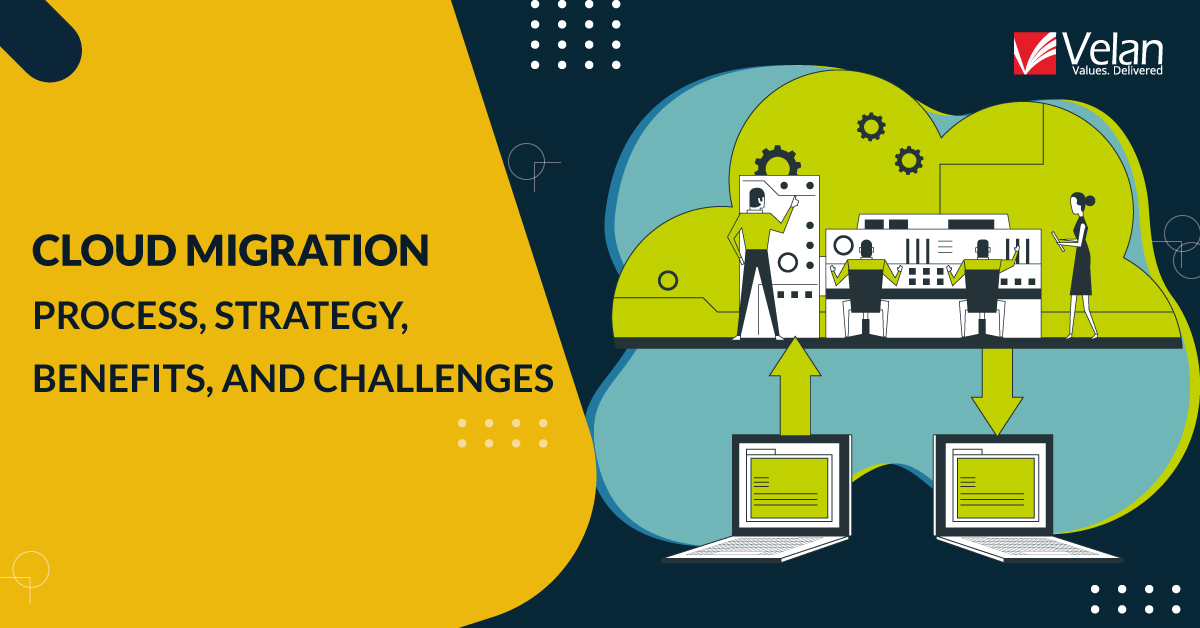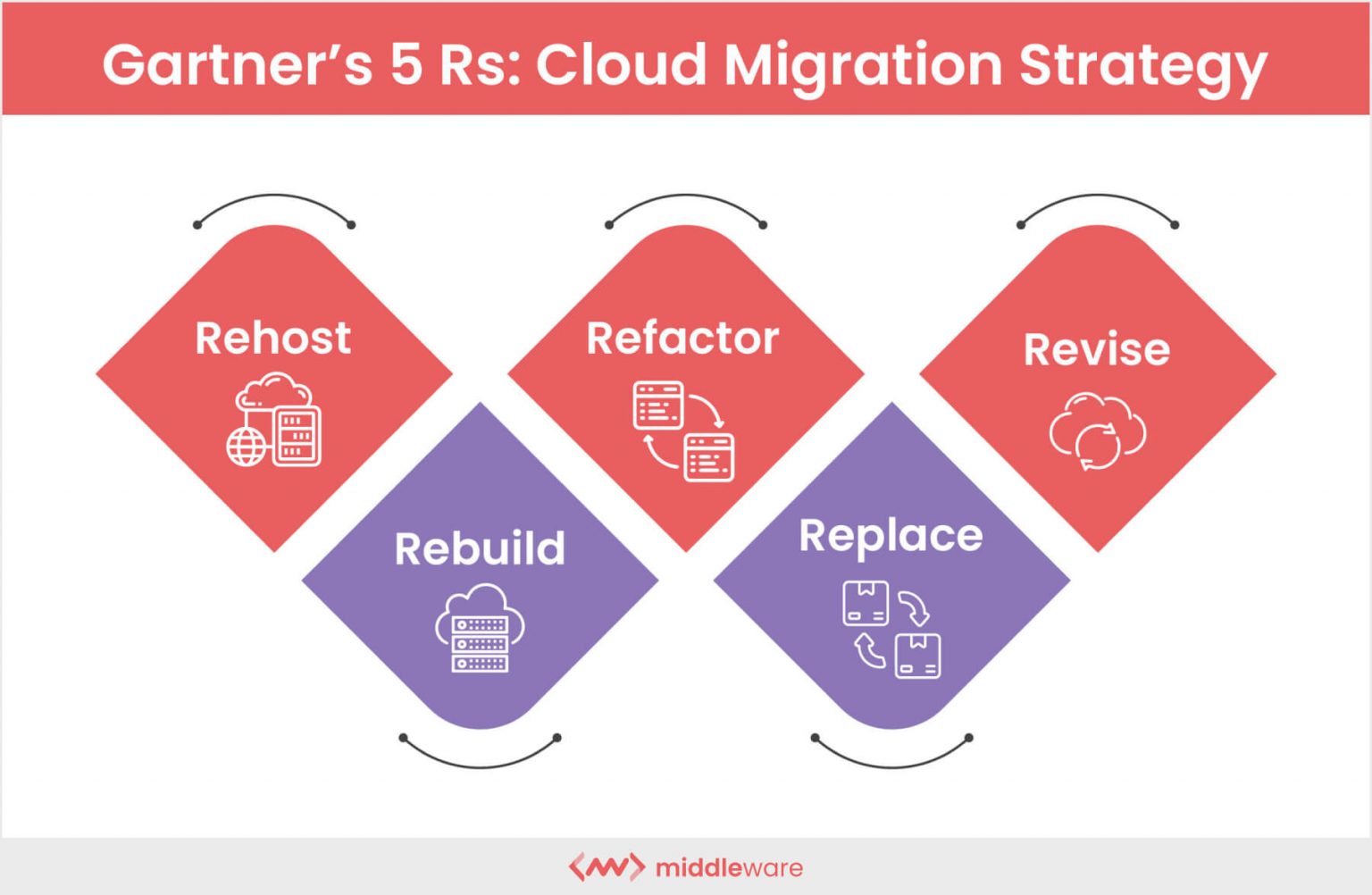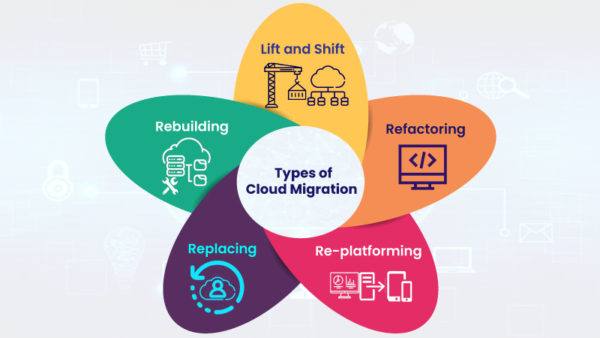What is a Cloud Migration Strategy Lift and Shift?
A cloud migration strategy lift and shift, often referred to as rehosting, is a popular approach for organizations looking to move their existing on-premises applications to the cloud. This method involves lifting the entire application, including its infrastructure, from the local data center and shifting it to a cloud-based infrastructure without making significant changes to the application’s code or architecture.
The lift and shift strategy offers several advantages, including faster migration times and minimal code changes. Organizations can take advantage of the cloud’s scalability and flexibility without investing substantial resources in re-architecting their applications. Moreover, this approach allows businesses to maintain application functionality while reducing on-premises infrastructure costs.
However, it is essential to recognize that the lift and shift strategy may not always be the best choice for every organization or application. While this method offers a quick and cost-effective solution for migrating to the cloud, it may not fully leverage the cloud’s potential benefits, such as optimized performance and reduced costs through auto-scaling and serverless architectures.
Key Considerations Before Implementing a Lift and Shift Strategy
Before embarking on a cloud migration strategy lift and shift, it is crucial to consider several factors to ensure a smooth and successful transition. These factors include:
Application readiness
Assess the compatibility of your applications with the target cloud environment. Identify any dependencies, potential issues, or limitations that may require adjustments before migration. Consider performing a thorough code review and testing to ensure seamless functionality in the new environment.
Infrastructure assessment
Evaluate your existing infrastructure to identify the components that can be directly moved to the cloud. This assessment should include servers, storage, networking equipment, and security systems. Document any potential bottlenecks or limitations that may impact performance in the cloud environment.
Cost analysis
Perform a detailed cost analysis to estimate the expenses associated with the migration and the ongoing costs in the cloud environment. Consider factors such as storage, compute, network usage, and any additional services required for your applications. Remember that cost optimization is an ongoing process in the cloud, and you should continuously monitor and adjust your usage to minimize expenses.
Resource allocation
Determine the appropriate resource allocation for your applications in the cloud environment. Ensure that you have enough capacity to handle peak usage while avoiding overprovisioning and unnecessary costs. Utilize cloud-specific features such as auto-scaling and serverless architectures to optimize resource utilization.
Security and compliance
Review the security policies and compliance requirements for your target cloud environment. Ensure that your applications and data are adequately protected, and that you have the necessary controls in place to meet regulatory requirements. Familiarize yourself with the shared responsibility model for security in the cloud and ensure that your organization is prepared to manage its portion of the security responsibilities.
How to Perform a Cloud Migration Strategy Lift and Shift
Follow these steps to ensure a successful cloud migration strategy lift and shift:
Step 1: Planning and preparation
Define your migration objectives, identify the applications and workloads to be migrated, and establish a migration timeline. Ensure that you have the necessary resources, including a dedicated migration team, to execute the migration.
Step 2: Infrastructure assessment
Evaluate your existing infrastructure to identify the components that can be directly moved to the cloud. Document any potential bottlenecks or limitations that may impact performance in the cloud environment.
Step 3: Application readiness assessment
Assess the compatibility of your applications with the target cloud environment. Identify any dependencies, potential issues, or limitations that may require adjustments before migration. Consider performing a thorough code review and testing to ensure seamless functionality in the new environment.
Step 4: Resource allocation
Determine the appropriate resource allocation for your applications in the cloud environment. Ensure that you have enough capacity to handle peak usage while avoiding overprovisioning and unnecessary costs. Utilize cloud-specific features such as auto-scaling and serverless architectures to optimize resource utilization.
Step 5: Security and compliance
Review the security policies and compliance requirements for your target cloud environment. Ensure that your applications and data are adequately protected, and that you have the necessary controls in place to meet regulatory requirements. Familiarize yourself with the shared responsibility model for security in the cloud and ensure that your organization is prepared to manage its portion of the security responsibilities.
Step 6: Execution
Perform the migration using tools and services specifically designed for lift and shift migrations. Monitor the migration process closely to ensure that there are no data losses or disruptions in service.
Step 7: Post-migration tasks
After the migration, perform thorough testing to ensure that all applications and services are functioning correctly. Optimize resource utilization, monitor performance, and maintain security to ensure a smooth and successful transition to the cloud environment.
Popular Tools for Lift and Shift Migrations
The following tools can facilitate lift and shift migrations, making the process smoother and more efficient:
AWS Server Migration Service
AWS Server Migration Service is a free tool that allows you to migrate on-premises servers to the Amazon Web Services (AWS) cloud. It supports various operating systems, including Windows Server, Linux, and Solaris. The service simplifies the migration process by automating the replication of server volumes and applying necessary configurations in the target AWS environment.
Azure Site Recovery
Azure Site Recovery is a disaster recovery and migration tool for Azure. It enables you to replicate on-premises machines, including physical servers, Hyper-V, and VMware virtual machines, to Azure. The service ensures minimal downtime during migration and provides automated failover and failback capabilities for disaster recovery scenarios.
Google Cloud’s Migrate for Compute Engine
Google Cloud’s Migrate for Compute Engine is a service that helps you migrate virtual machines from your on-premises environment or other clouds to Google Cloud Platform. It supports various source platforms, including VMware, Hyper-V, and physical servers. The service simplifies the migration process by automating the assessment, migration, and conversion of virtual machines to Google Cloud’s infrastructure.
Rackspace Application Migration Service
Rackspace Application Migration Service is a managed service that helps you migrate applications from on-premises or other cloud environments to Rackspace Private Cloud or other OpenStack-based clouds. The service simplifies the migration process by automating the conversion of virtual machines and providing expert guidance throughout the migration process.
CloudEndure Migration
CloudEndure Migration is a disaster recovery and migration service that supports various target platforms, including AWS, Azure, and Google Cloud. It simplifies the migration process by automatically converting source machines to the target infrastructure, replicating data in real-time, and minimizing downtime during the cutover.
Best Practices for a Successful Lift and Shift Migration
Follow these expert tips and best practices to ensure a smooth and successful lift and shift migration:
Optimize resource utilization
Before migrating, analyze your on-premises resource utilization and right-size your cloud resources accordingly. This approach will help you avoid overprovisioning and minimize costs in the cloud environment.
Monitor performance
Establish performance baselines for your applications and monitor them closely during and after the migration. This practice will help you identify any performance issues and make necessary adjustments to ensure a smooth user experience.
Maintain security
Ensure that your security policies and controls are properly configured in the target cloud environment. Implement multi-factor authentication, encryption, and regular security audits to protect your applications and data.
Test thoroughly
Perform thorough testing of your applications and infrastructure in the staging environment before migrating to the production environment. This practice will help you identify and resolve any issues before they impact your users.
Plan for disaster recovery
Establish a disaster recovery plan for your cloud environment, including backup and restore procedures, failover and failback strategies, and regular testing to ensure that your applications and data are protected in the event of a disaster.
Continuously optimize
Regularly review your cloud resource utilization, performance metrics, and security posture to identify opportunities for optimization and cost savings. Utilize cloud-specific features such as auto-scaling, serverless architectures, and reserved instances to optimize resource utilization and minimize costs.
Comparing Lift and Shift to Other Cloud Migration Strategies
When considering a cloud migration strategy, it’s essential to understand the differences between various approaches, such as lift and shift, rehosting, replatforming, and refactoring. Each strategy has its unique benefits, considerations, and use cases.
Lift and Shift vs. Rehosting
Lift and shift and rehosting are often used interchangeably, as both strategies involve moving an application from an on-premises environment to the cloud without significant code changes. However, lift and shift typically refers to the use of automated tools to facilitate the migration, while rehosting may involve manual configuration and setup.
Lift and Shift vs. Replatforming
Replatforming involves making minor modifications to an application to optimize it for the cloud environment. This strategy may include updating the database, implementing auto-scaling, or integrating with cloud-native services. While lift and shift focuses on minimizing code changes, replatforming aims to take advantage of cloud-specific features to improve performance, scalability, and cost efficiency.
Lift and Shift vs. Refactoring
Refactoring, also known as rearchitecting, involves redesigning an application to take full advantage of cloud-native features and architectures. This strategy may include breaking down monolithic applications into microservices, implementing serverless architectures, or integrating with cloud-native machine learning and AI services. Refactoring requires significant code changes and development resources but offers the most substantial benefits in terms of scalability, performance, and cost efficiency.
Choosing the Right Strategy
The choice of migration strategy depends on various factors, such as the complexity of the application, the availability of development resources, and the desired benefits and outcomes. Lift and shift is an excellent option for organizations looking to quickly move to the cloud with minimal code changes, while replatforming and refactoring may be more suitable for organizations seeking to optimize their applications for the cloud environment.
Real-Life Success Stories: Lift and Shift in Action
Learn from these real-life examples of successful lift and shift migrations and discover the challenges they faced and the benefits they gained:
Company A: From On-Premises to the Cloud
Company A, a leading provider of financial services, decided to migrate its customer relationship management (CRM) system to the cloud using a lift and shift approach. By utilizing AWS Server Migration Service, the company was able to move its entire CRM system to Amazon Web Services (AWS) in just a few weeks. Although the initial cost was higher than expected, Company A was able to optimize its resource utilization and reduce its overall costs by 30% within six months.
Company B: Overcoming Legacy Infrastructure Challenges
Company B, a manufacturing firm, faced significant challenges with its outdated, on-premises infrastructure. By using Azure Site Recovery, the company was able to migrate its entire infrastructure to Microsoft Azure in a matter of months. Although the migration process was complex, Company B was able to take advantage of Azure’s scalability and flexibility, reducing its IT maintenance costs by 50% and improving its application performance by 35%.
Company C: A Smooth Transition to Google Cloud
Company C, a software development firm, needed to migrate its legacy applications to a more scalable and cost-effective platform. By using Google Cloud’s Migrate for Compute Engine, the company was able to move its applications to Google Cloud Platform (GCP) with minimal disruption. Although the initial migration process was time-consuming, Company C was able to optimize its resource utilization and reduce its IT costs by 40% within a year.
Potential Drawbacks and Limitations of a Lift and Shift Strategy
While a cloud migration strategy lift and shift offers several benefits, it’s essential to be aware of its potential downsides and limitations. These include:
Risk of carrying over outdated technology
Lift and shift migrations typically involve moving an application to the cloud without making significant code changes. This approach may result in carrying over outdated technology and legacy systems that may not be compatible with the cloud environment. Over time, this can lead to higher maintenance costs and reduced agility.
Lack of optimization for the cloud environment
Lift and shift migrations do not take full advantage of cloud-native features and services. As a result, applications may not be optimized for the cloud environment, leading to suboptimal performance, scalability, and cost efficiency. In some cases, this may result in higher IT costs and reduced competitiveness compared to cloud-native applications.
Limited flexibility and agility
Lift and shift migrations may limit an organization’s flexibility and agility in the long term. By replicating the on-premises infrastructure in the cloud, organizations may miss out on the opportunity to adopt cloud-native architectures, such as microservices and serverless computing, that offer greater flexibility and scalability.
Security and compliance considerations
Lift and shift migrations may introduce security and compliance risks if not properly addressed. Organizations must ensure that their applications and data are adequately secured in the cloud environment, and that they comply with relevant regulations and standards. This may require additional configuration and setup, as well as ongoing monitoring and maintenance.
Addressing the limitations of lift and shift
To address the limitations of lift and shift migrations, organizations should consider adopting a hybrid or multi-cloud strategy that combines lift and shift with other cloud migration strategies, such as replatforming or refactoring. By taking a more strategic and holistic approach to cloud migration, organizations can optimize their applications for the cloud environment, reduce IT costs, and improve their competitiveness in the long term.







